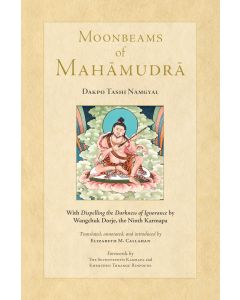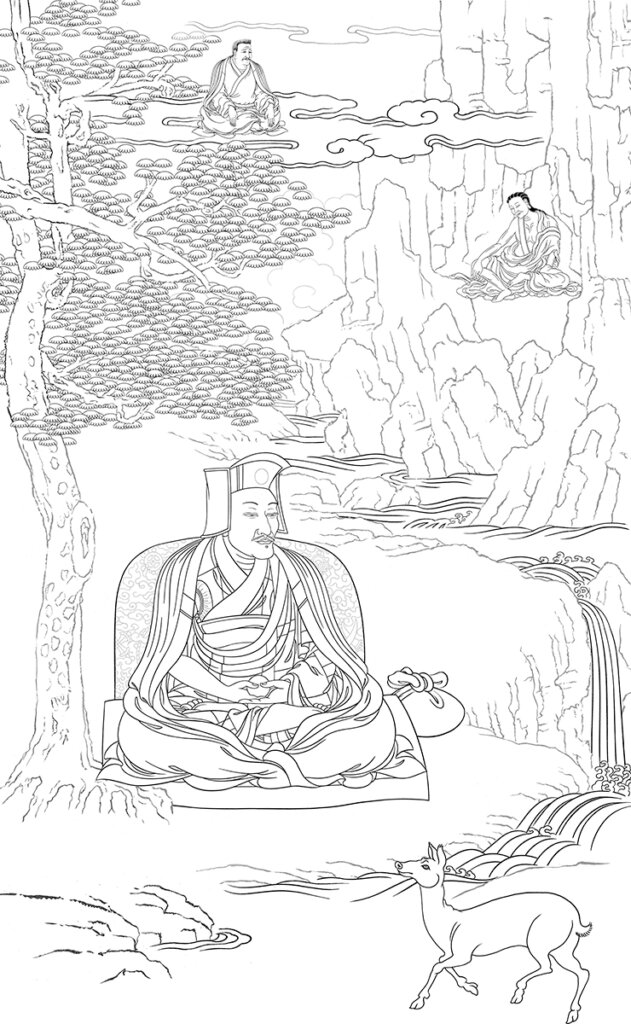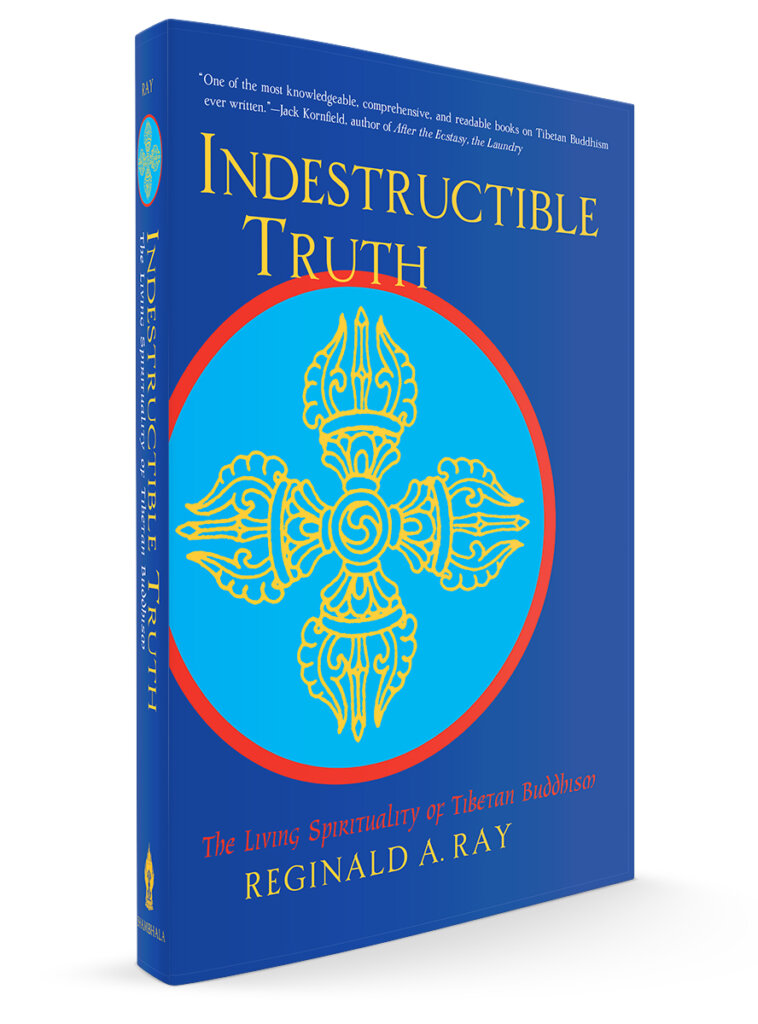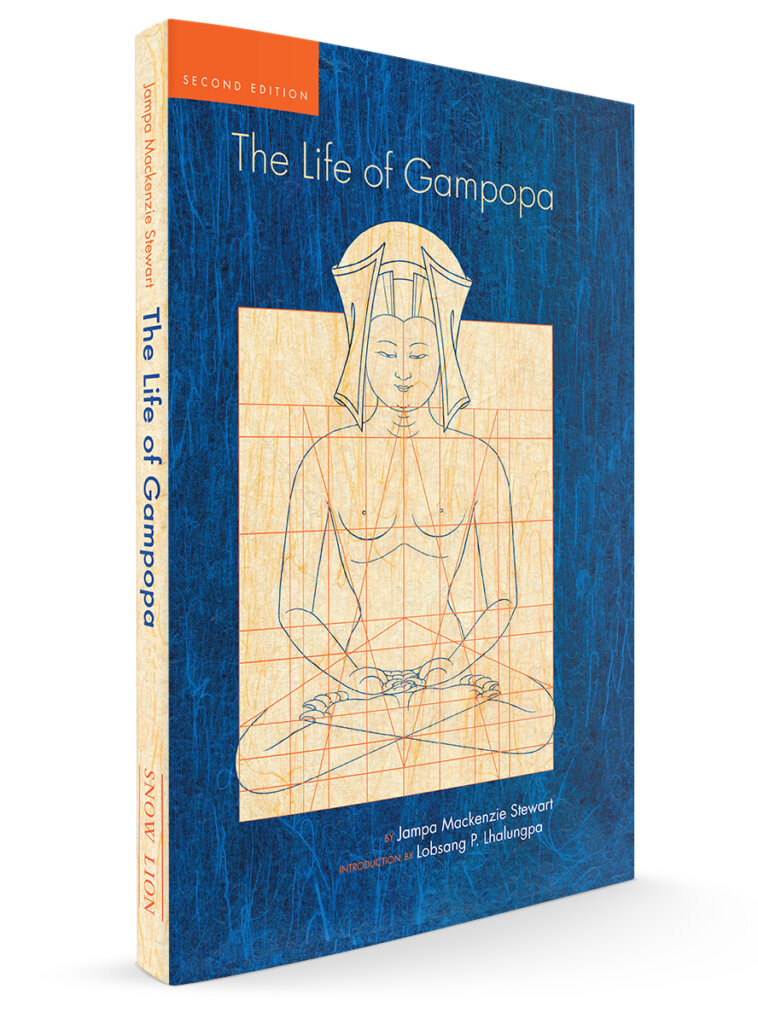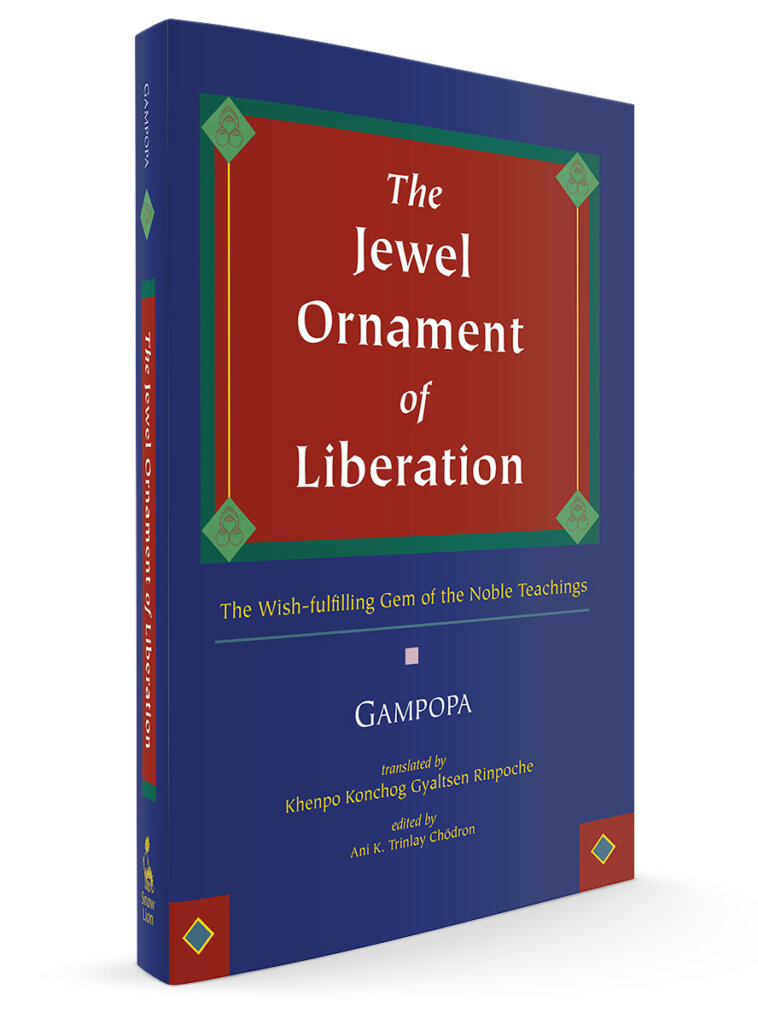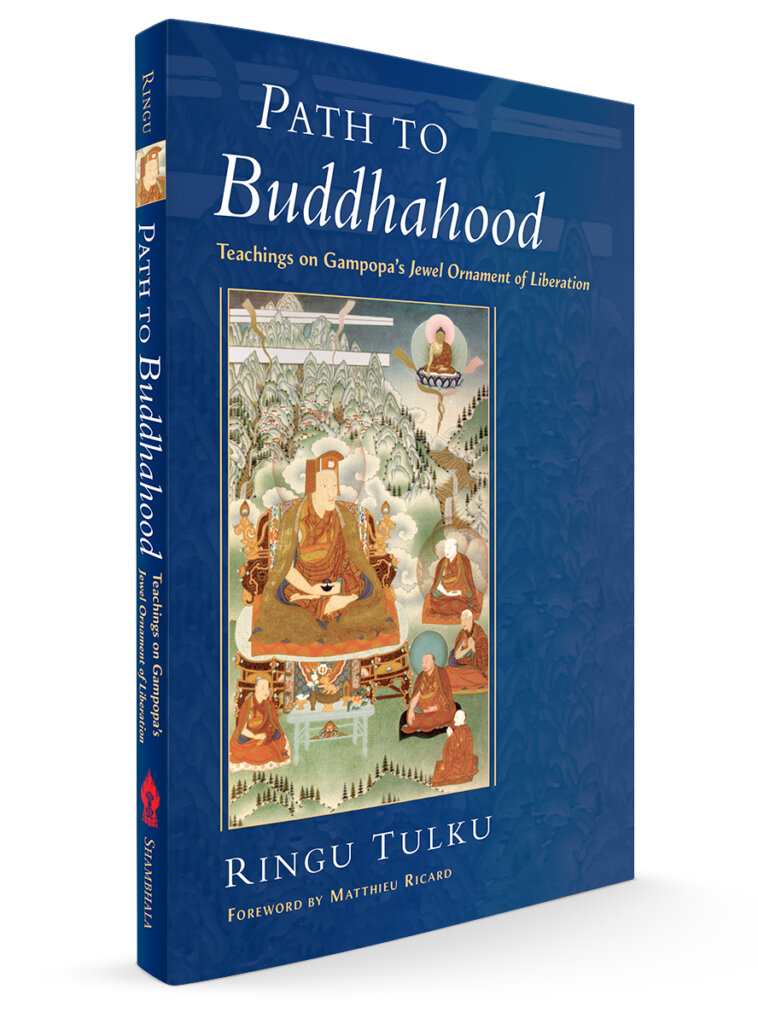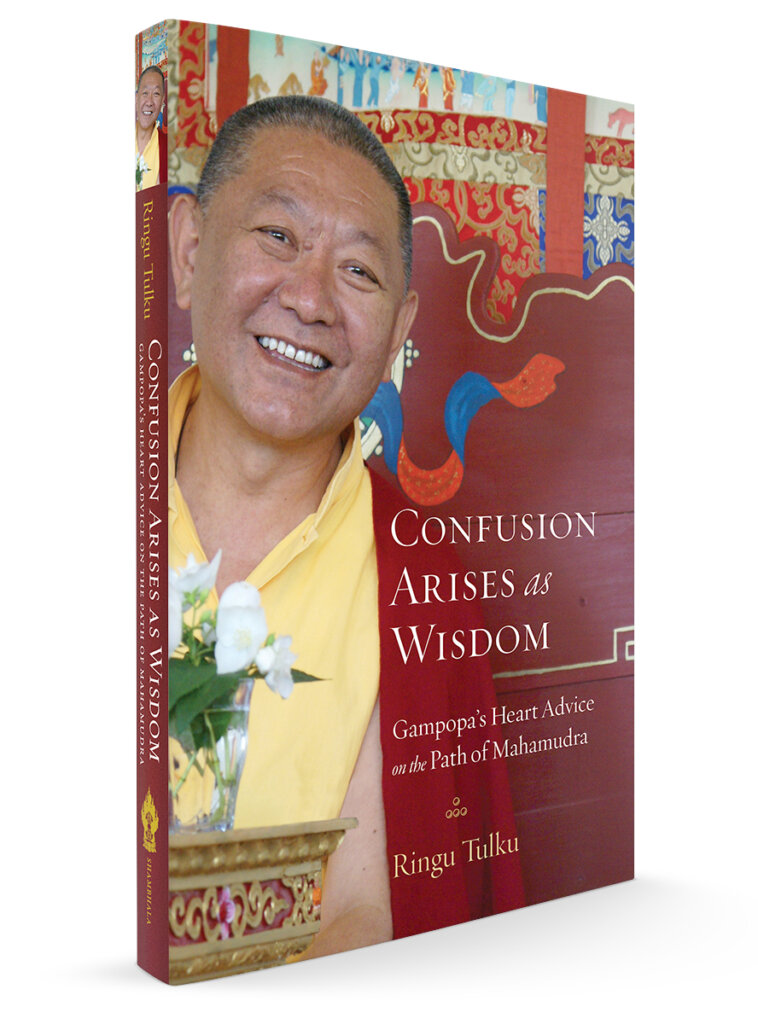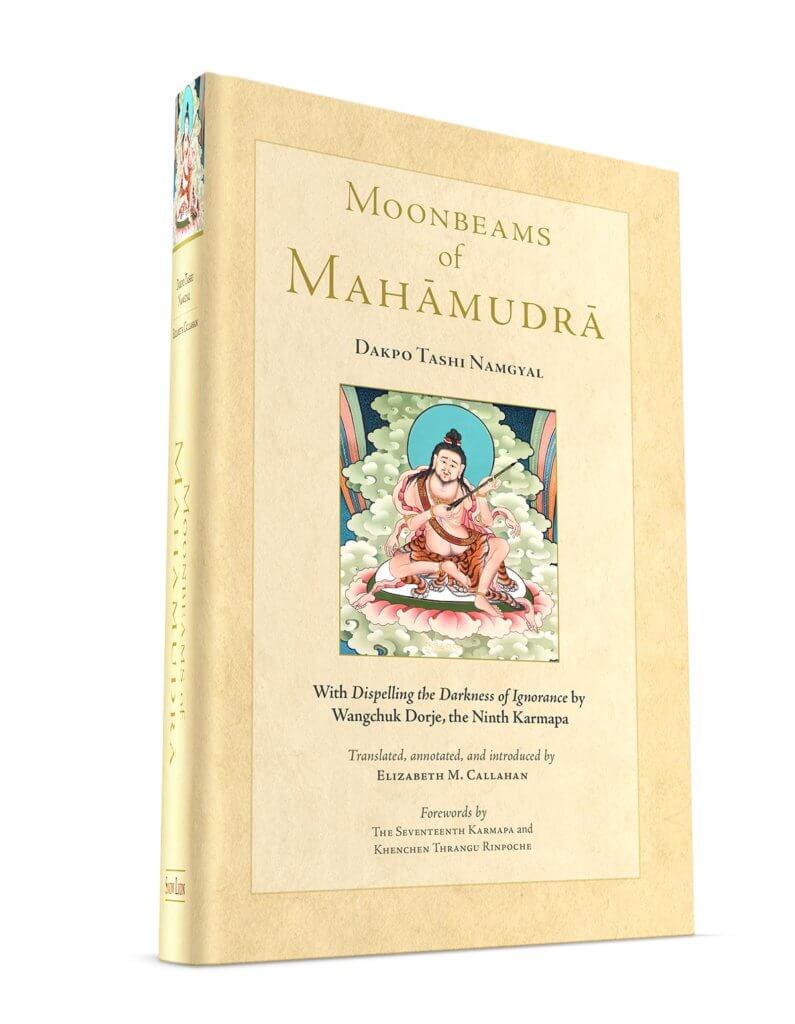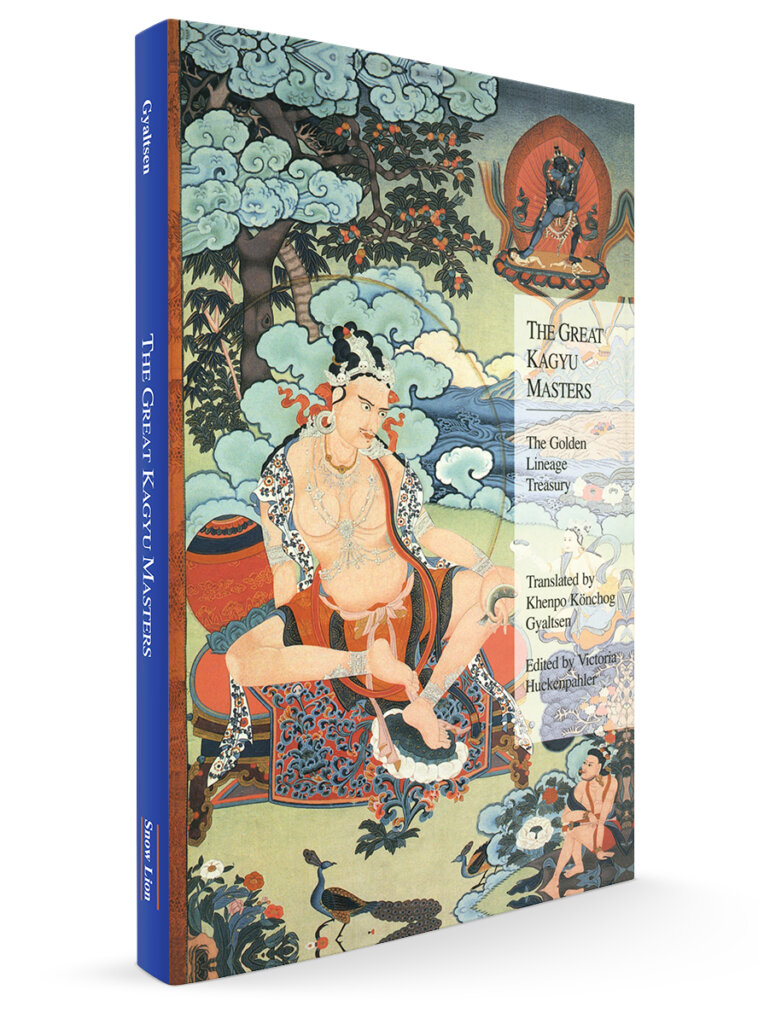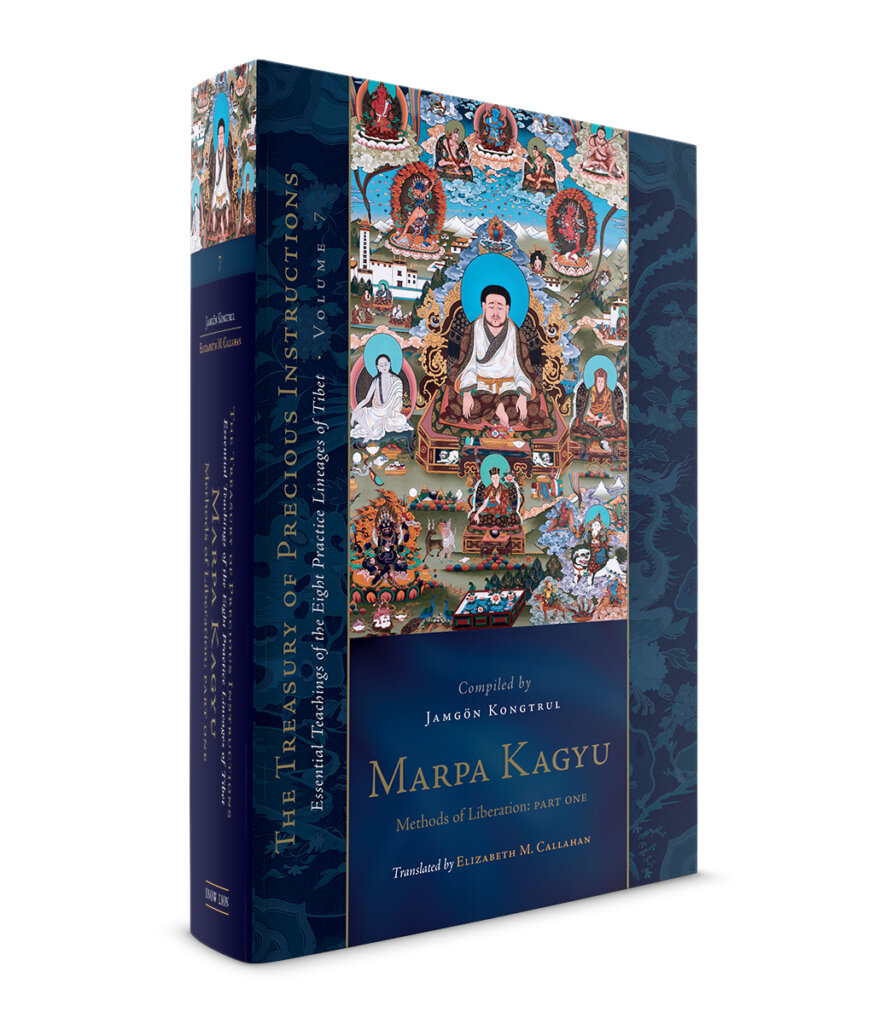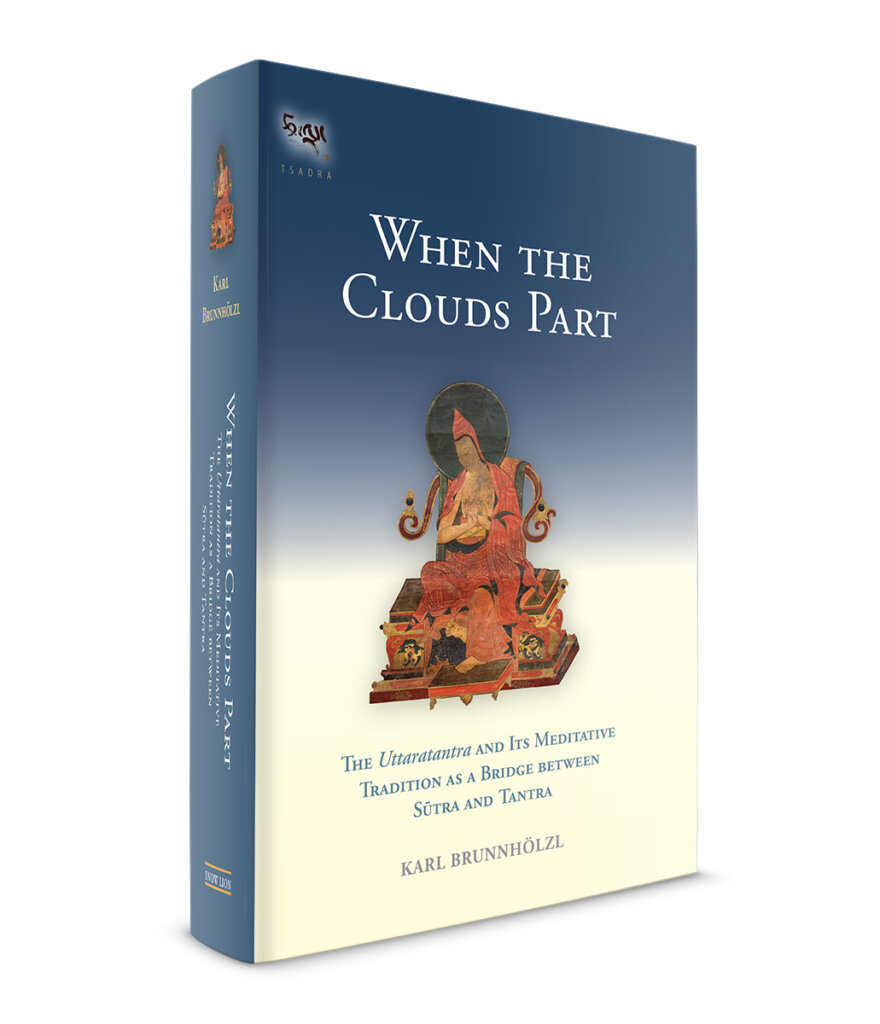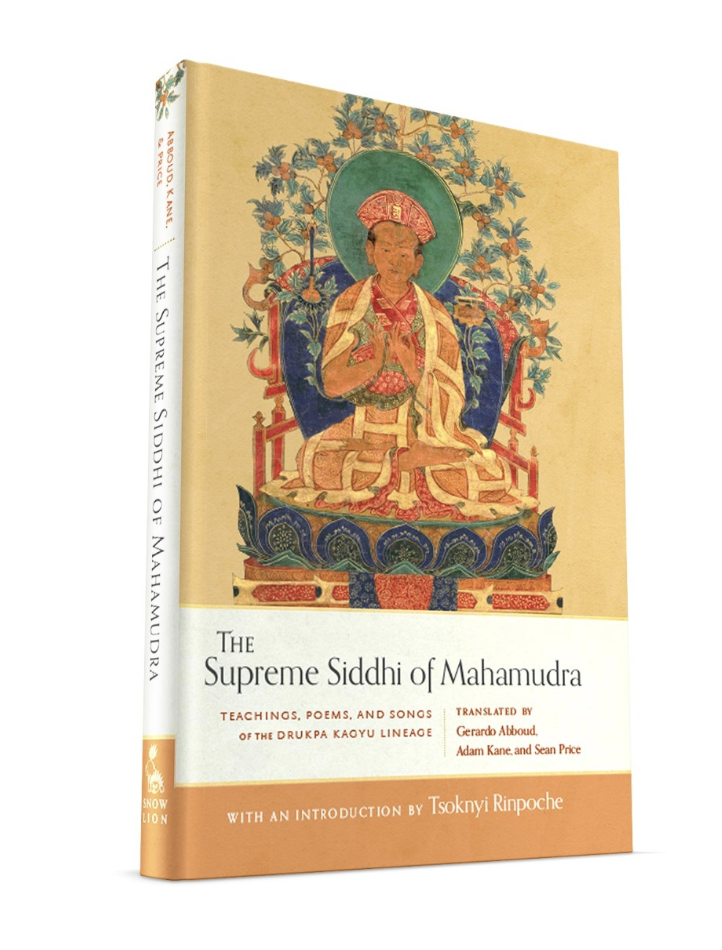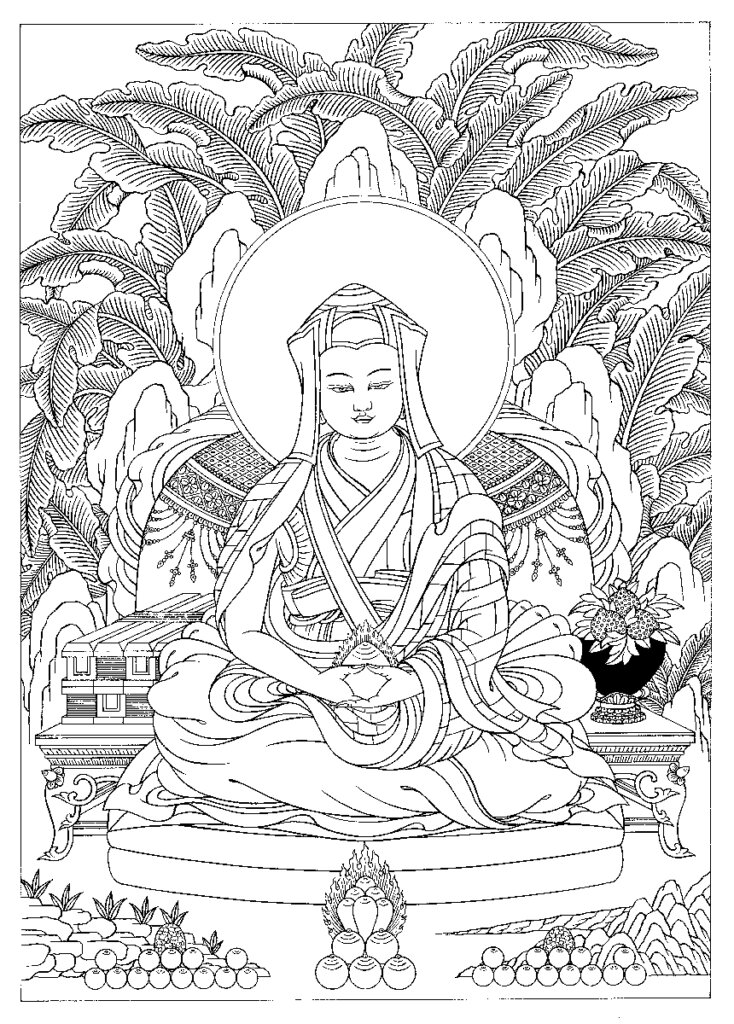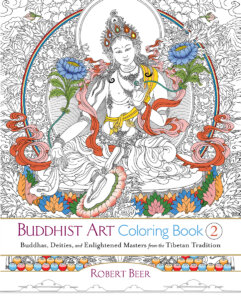Dakpo Tashi Namgyal
Dakpo Tashi Namgyal (1513-1587) was the first recognized reincarnation of Gampopa and an important master of the Dakpo Kagyu tradition. He wrote two highly acclaimed texts on Mahāmudrā practice: Moonbeams of Mahāmudrā and Clarifying the Natural State.
Dakpo Tashi Namgyal
GUIDES

The following short biography of Gampopa is adapted from Indestructible Truth: The Living Spirituality of Tibetan Buddhism:
In terms of the institutional continuity of the Kagyu¨ lineage, Gampopa was Milarepa’s most influential disciple. He was born in 1079 in the region of Takpo and is hence also known as Takpo Lhaje (the Doctor from Takpo). His biography tells us that, as a young man, he marries and has one child. However, while he is still in his mid-twenties, a plague sweeps through the region, and both his wife and child die. Disconsolate, with a new and vivid understanding of death, he realizes that seeking ordinary happiness in the world makes no sense and is doomed to failure. From this realization comes his decision, at the age of twenty-five, to renounce the world and enter monastic life.
Gampopa enters the Kadam tradition of Atisha and pursues a life defined by following the monastic Vinaya, studying the main scholarly traditions of Buddhism, and practicing meditation. His support is provided by some land that he continues to own. One spring, he has entered retreat in a hut built near the monastery. On a certain day, having come out of retreat and walking in the monastic grounds, he hears three beggars talking. The first expresses a desire for plentiful food and drink, while the second says he would like to be a king like Tsede of Tibet.
The third, however, comments, "Even Tsede will one day die, so his happiness is not lasting. As long as you are going to wish, wish to become a great yogin like Milarepa who needs no clothing or human food. He is fed nectar by the Dakinis, rides atop a white snow lion, and flies in the sky. Now that would be truly wondrous."
"Merely by hearing the name of Milarepa the hair of Gampopa’s body stood on end, tears came to his eyes and a special devotion, unlike he had ever felt before, emerged in his mind." Initially, his upsurge of feeling paralyzes him, and he is unable to move. When he eventually returns to his retreat hut, he is unable to meditate but keeps thinking constantly and obsessively about Milarepa. He returns to the monastery, locates the three beggars, and questions them about the person, the teachings, and the location of Milarepa. They direct him to a mountainous region in western Tibet where Milarepa is in retreat. Selling his land for four ounces of gold, Gampopa sets off to find his master.
At this point in Indestructible Truth, the meeting between Gampopa and Milarepa is recounted by Kalu Rinpoche. It then continues:
Gampopa’s path included the strict disciplinary and scholarly training of the monk as well as the meditation of the yogin in solitary retreat. In his person and in the teachings he gave, Gampopa expressed the integrated combination of these two strands, something that was unusual in Tibet at that time. This integration is laid out in his Jewel Ornament of Liberation, a work on the stages of the path that has enjoyed great fame throughout Tibetan Buddhist history and is still popular today. It was Gampopa’s mission to institutionalize this integration of his Kadam and Kagyu¨ training. In fulfillment of this, he built a monastery and ordained his main disciples. According to his biography, almost all of his primary disciples were ordained monks, following the Vinaya.
Essential Texts by and about Gampopa
Paperback | Ebook
$19.95 - Paperback
The Life of Gampopa, Second Edition
By Jampa Mackenzie Stewart, illustrated by Eva Van Dam, introduction by Lobsang Lhalungpa
Here is the first complete life story of Gampopa, foremost disciple of Milarepa and a forefather of the Kagyu lineages. Compiled from numerous Tibetan biographies, this comprehensive and inspiring rendition highlights the extraordinary details of Gampopa's meditative experiences and presents direct insights into the practice and realization of Mahamudra. Includes a history of the Kagyu and an essay on Mahamudra.
A history of the Kagyu order by Lobsang P. Lhalungpa augments Gampopa's biography, illustrating this revered teacher's central role in the development of the Tibetan
Kagyu lineages. A concluding essay on Mahamudra introduces Vajrayana Buddhism to beginners, while simultaneously supporting advanced practitioners with fresh insights.
Jewel Ornament of Liberation
The Jewel Ornament of Liberation (Tibetan: དམ་ཆོས་ཡིད་བཞིན་གྱི་ནོར་བུ་ཐར་པ་རིན་པོ་ཆེའི་རྒྱན, Wylie: dam chos yid bzhin nor bu thar) is Gampopa's most famous text. As His Holiness the Dalai Lama says in his forewrod to the translation below:
This text is an excellent work that reflects the blending of two systems of teaching-the Kadampa tradition and the Mahamudra tradition. Gampopa received complete transmissions of Jowo Je' s Lamrim tradition and Naropa' s Mahamudra tradition. This text is therefore a Lamrim text and reflects the Madhyamika philosophical view, but it also implicitly reflects the teachings of Annuttarayoga Tantra and Mahamudra. Mahamudra is not explained explicitly, however, as this is a sutric text and Mahamudra deals with the secret teachings of tantra.
Paperback | Ebook
$34.95 - Paperback
The Jewel Ornament of Liberation: The Wish-Fulfilling Gem of the Noble Teachings
By Gampopa, Translated by Khenchen Konchog Gyaltshen Rinpoche
Foreword by H.H. the Fourteenth Dalai Lama
A masterwork of Tibetan Buddhism—providing the complete foundation for study and practice—from beginning to Buddhahood. Includes teachings on Buddha-nature, finding the spiritual master, impermanence, karma, cultivation of bodhicitta, development of the six perfections, the ten bodhisattva bhumis, Buddhahood, and the activities of the Buddha.
Paperback | Ebook
$22.95 - Paperback
Path to Buddhahood: Teachings on Gampopa's Jewel Ornament of Liberation
By Ringu Tulku
The Jewel Ornament of Liberation is regarded by all Tibetan Buddhist schools as one of the most inspiring and comprehensive works of the tradition. Written by Gampopa (born 1079 CE), the main spiritual son of the great hermit Milarepa, this important text lays out the stages of the Buddhist path and explains how an enlightened attitude is strengthened by practicing the six perfections of generosity, discipline, patience, exertion, meditation, and knowledge.
For the first time, this sometimes difficult text is made accessible to Western readers in a clear and engaging commentary. Tibetan teacher Ringu Tulku explores this classic work of Buddhist practice and philosophy with the playful and fresh style that has made him so popular among students of Buddhism. Using folksy examples and anecdotes, he brings this text to life, discussing topics such as:
- seeing through the illusions that cause us to suffer
- advice on acting with kindness, generosity, and patience
- instructions on how to put others first
- guidance for attaining peace and lasting compassion
Paperback | Ebook
$22.95 - Paperback
Confusion Arises as Wisdom: Gampopa's Heart Advice on the Path of Mahamudra
By Gampopa and Ringu Tulku
How could confusion arise as wisdom? According to the Mahamudra view, confusion arises as wisdom when we realize that everything we experience is the radiance of the mind’s own nature. And what is the nature of our mind? And how do we come to recognize that? These are the questions Gampopa answers for his students in the text commented upon here, known as the Great Community Talks. He shows them—and now us—the path of deep understanding and meditation that leads to the realization of Mahamudra, the “Great Seal” of the true nature of reality.
This book contains a few general instructions on Mahayana topics, most of the instructions are on Mahamudra meditation and the Vajrayana view and practice.
Chapter 1 opens the book in a traditional way by giving the lineage history of these teachings and some background on Gampopa’s life.
Chapter 2 is a detailed discussion of the importance of devotion. The way devotion is described in seven categories is stylistically reminiscent of Gampopa’s most influential book, the Jewel Ornament of Liberation.
Chapter 3 tells a short story about a monk who was able to talk directly with Chenrezik, the bodhisattva of compassion, and ask him questions on behalf of Atisha Dipankara, the founder of the Kadampa lineage.
Chapter 4 is Gampopa’s own explanation of what is popularly known as the Four Dharmas of Gampopa. This way of explaining the Four Dharmas is somewhat unusual, and the last section of this chapter forms a bridge with the upcoming Vajrayana teachings by introducing coemergent wisdom, a key term in Mahamudra.
The next three chapters discuss Mahamudra in more detail from different angles: chapter 5 is on applying coemergent wisdom to our experience, including some very practical advice on bringing negativity onto the path; chapter 6 is a pointing-out instruction on the nature of the mind; and chapter 7 discusses the meaning of Mahamudra in terms of experience and realization. Later in the book, chapters 9 and 12 also focus on Mahamudra: chapter 9 is on stabilizing recognition of the nature of the mind, and chapter 12 discusses the great significance of knowing tamel gyi shepa, the ordinary mind.
Chapter 8 is a detailed explanation of creation stage practice, or deity yoga, and emphasizes the way it transforms our perception of ourselves and our world. Chapter 10 discusses how to tell if a spiritual teacher is genuine or not, and chapters 11 and 13 examine the Vajrayana view, meditation, action, and result from two very different perspectives. Chapter 14 is a pithy explanation of right and wrong motivation when listening to dharma teachings. Chapter 15, “Pitfalls in Experience and Deviations from the View,” points out some typical mistakes people make in practicing meditation and understanding emptiness. Chapter 16 highlights the illusory, dreamlike nature of bodhichitta as the inseparability of compassion and wisdom.
Chapter 17 is Gampopa’s heart advice to students doing long retreats. One can imagine Gampopa talking to a small group of dedicated practitioners, giving them very personal and pointed advice about what they must do to reach liberation. The final chapter, chapter 18, lists ten ways that students would ideally serve their teachers. The commentary is followed by an appendix, which contains the entire translation of the root text without commentary.
Hardcover | Ebook
$59.95 - Hardcover
Moonbeams of Mahamudra
By Dakpo Tashi Namgyal, translated and introduced by Elizabeth M. Callahan
This classic Buddhist work, written in the sixteenth century, comprehensively presents the entire scope of the Tibetan Kagyu Mahāmudrā tradition. These profound yet accessible instructions focus on becoming familiar with the nature of one’s mind as the primary means to realize ultimate reality and thus attain buddhahood. Dakpo Tashi Namgyal’s manual for the view and practice of Mahāmudrā is widely considered the single most important work on the subject, systematically introducing the view and associated meditation techniques in a progressive manner.
Moonbeams of Mahāmudrā, along with the Ninth Karmapa Wangchuk Dorje’s Dispelling the Darkness of Ignorance, are to this day some of the most studied texts on Mahāmudrā in the Kagyu monasteries throughout Tibet and the Himalayas. Elizabeth M. Callahan, a renowned translator of classical Kagyu literature, has provided new translations of these two texts along with ancillary materials and annotations, making this a genuine resource for both scholars and students of Tibetan Buddhism. This historic contribution therefore offers the necessary tools to properly study and apply the Mahāmudrā teachings in a modern context.
Gampopa is central to this work and appears many hundreds of time throughout. Here is an example:
Gampopa taught somewhat differently from his Kadam teachers and Milarepa. Marpa and Milarepa guided their students to the realization of mahāmudrā by first teaching them caṇḍālī and then mahāmudrā. Once their students had experienced the wisdom of caṇḍālī, the force of that brought forth the realization of mahāmudrā. While Gampopa did teach the same Vajrayāna path of method to certain disciples, he also taught other students mahāmudrā as a path distinct from the Mantra path and its methodology.
More Books Featuring Naropa
Paperback | Ebook
$27.95 - Paperback
The Great Kagyu Masters: The Golden Lineage Treasury
Compiled by Dorje Dze Öd, translated by Khenchen Konchog Gyaltshen Rinpoche
The Golden Lineage Treasury was compiled by Dorje Dze Öd a great master of the Drikung lineage active in the Mount Kailasjh region of Western Tibet. This text of the Kagyu tradition profiles and the forefathers of the tradition including Vajradhara, the Buddha, Tilopa, Naropa, the Four Great Dharma Kings of Tibet, Marpa, Milarepa, Atisha, Gampopa, Phagmodrupa, Jigten Sumgon, and more.
The chapter on Gampopa is 19 pages long.
Hardcover | Ebook
$49.95 - Hardcover
Marpa Kagyu, Part One - Methods of Liberation: Essential Teachings of the Eight Practice Lineages of Tibet, Volume 7
The Treasury of Precious Instructions
By Jamgon Kongtrul Lodro Thaye
The seventh volume of the series, Marpa Kagyu, is the first of four volumes that present a selection of core instructions from the Marpa Kagyu lineage of Tibetan Buddhism. This lineage is named for the eleventh-century Tibetan Marpa Chokyi Lodrö of Lhodrak who traveled to India to study the sutras and tantras with many scholar-siddhas, the foremost being Naropa and Maitripa. The first part of this volume contains source texts on mahamudra and the six dharmas by such famous masters as Saraha and Tilopa. The second part begins with a collection of sadhanas and abhisekas related to the Root Cakrasamvara Aural Transmissions, which are the means for maturing, or empowering, students. It is followed by the liberating instructions, first from the Rechung Aural Transmission. This section on instructions continues in the following three Marpa Kagyu volumes. Also included are lineage charts and detailed notes by translator Elizabeth M. Callahan.
The piece by Gampopa in this volume includes Mahāmudrā: Path of a Single Stride. From Callahan's introduction to the piece:
This work is not included in Gampopa’s Collected Works [in Tibetan] and nothing seems to be known of its provenance other than that its colophon says that Gampopa transmitted it to Dusum Khyenpa. This text, in a few words, describes, as its title says, “the path of a single stride,” a phrase often used in mahāmudrā texts to refer to the ever-present, indivisible quality of mahāmudrā, the nature of mind. Dakpo Tashi Namgyal explains:
Mahāmudrā, the essence of dharmatā, is a path of a single stride.
Since dharmatā cannot be divided in terms of its essence, it is said
that on the level of the definitive meaning, it is not possible to
delineate the stages of bhūmis and paths.
Hardcover | Ebook
$49.95 - Hardcover
When the Clouds Part: The Uttaratantra and Its Meditative Tradition as a Bridge between Sutra and Tantra
Translated by Karl Brunnhölzl
This book discusses a wide range of topics connected with the notion of buddha nature as presented in Indo-Tibetan Buddhism and includes an overview of the sūtra sources of the tathāgatagarbha teachings and the different ways of explaining the meaning of this term. It includes new translations of the Maitreya treatise Mahāyānottaratantra (Ratnagotravibhāga), the primary Indian text on the subject, its Indian commentaries, and two (hitherto untranslated) commentaries from the Tibetan Kagyü tradition.
There is a chapter entitled "Gampopa’s Mahāmudrā and the Uttaratantra", but he appears in a couple hundred places throughout the book related to how his teachings connect to the teachings on Buddha Nature from the Uttaratantra.
Hardcover | Ebook
$24.95 - Hardcover
The Supreme Siddhi of Mahamudra: Teachings, Poems, and Songs of the Drukpa Kagyu Lineage
Translated by Gerardo Abboud, Sean Price, and Adam Kane
The Drukpa Kagyu lineage is renowned among the traditions of Vajrayana Buddhism for producing some of the greatest yogis from across the Himalayas. After spending many years in mountain retreats, these meditation masters displayed miraculous signs of spiritual accomplishment that have inspired generations of Buddhist practitioners. The teachings found here are sources of inspiration for any student wishing to genuinely connect with this tradition.
These translations include Mahamudra advice and songs of realization from major Tibetan Buddhist figures such as Gampopa, Tsangpa Gyare, Drukpa Kunleg, and Pema Karpo, as well as modern Drukpa masters such as Togden Shakya Shri and Adeu Rinpoche. This collection of direct pith instructions and meditation advice also includes an overview of the tradition by Tsoknyi Rinpoche.
The second chapter, on Gampopa, is a translation of the The Single Sufficient Path of Mahamudra, which has three sections:
- resolving the natural state
- pointing out the nature of things
- training in suchness as the path.
Combined with guidance from a qualified teacher, these teachings offer techniques for resting in the naturally pure and luminous state of our minds. As these masters make clear, through stabilizing the meditative experiences of bliss, clarity, and nonthought, we will be liberated from suffering in this very life and will therefore be able to benefit countless beings.
Translator on Gerardo Abboud on The Supreme Siddhi of Mahamudra
Additional Resources on Tilopa
Lotsawa House hosts at least five works by Gampopa as well as several where he features. 


